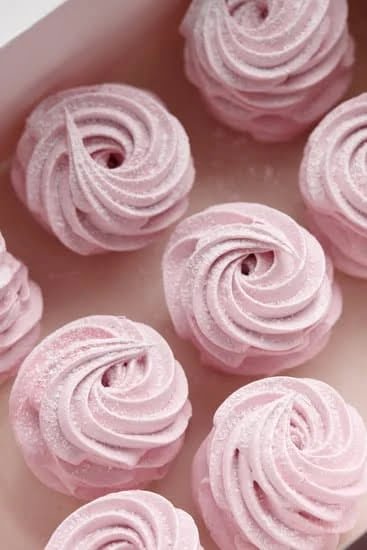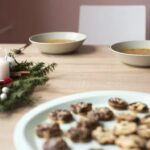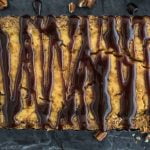When it comes to cake decorating, one of the essential tools in every baker’s arsenal is piping tips. These small, often overlooked tools hold the key to creating beautifully designed cakes that rival those seen in professional bakeries. In this article, we will delve into the world of cake decorating piping tips and explore how they can elevate your cake decorating game to new heights.
In our ultimate guide, we will cover everything you need to know about different types of cake decorating piping tips and how to choose the perfect tip for your design. Whether you’re looking to create intricate patterns or delicate flower decorations, we have got you covered.
But before we jump into the specific techniques and tips for using cake decorating piping tips, it’s important to have a solid foundation in mastering the basics. In this section, we will provide essential techniques that will help you become proficient in using these versatile tools. From holding the piping bag correctly to ensuring consistent pressure, we’ll share our insider secrets for achieving professional-looking results every time.
So whether you’re a seasoned cake decorator looking to expand your repertoire or a beginner embarking on your cake decorating journey, this article is your go-to resource for all things cake decorating piping tips. Get ready to unlock the secrets and take your cakes from amateur to expert-level with these indispensable tools.
Types of Cake Decorating Piping Tips
Cake decorating piping tips come in a wide range of shapes and sizes, each designed to create different effects and designs on your cakes. Choosing the right piping tip can make a huge difference in the final result of your cake design. In this section, we will provide you with an ultimate guide to choosing the perfect tip for your design.
- Round Tips: These are the most basic and versatile piping tips. They come in various sizes, ranging from small round tips (size 1-3) for outlining and writing, to larger round tips (size 12-18) for filling in large areas or creating dots.
- Star Tips: Star tips have multiple pointed openings, which creates a textured star-like effect when piped. These tips are commonly used for creating borders, stars, rosettes, shells, and other decorative accents. Smaller star tips (size 16-21) create finer details while larger ones (size 30-32) produce bigger stars and shells.
- Petal Tips: Petal tips have a curved shape resembling a teardrop or half-moon. These are primarily used to create flower petals such as roses, tulips, and ruffles on cakes. The size of the petal tip will determine the size of your flower petals – smaller tips (size 61-98) for smaller flowers and larger ones (size 101-127) for bigger flowers.
- Leaf Tips: Leaf tips have a broad shape with one side slightly longer than the other, imitating the natural look of leaves. These tips are perfect for creating realistic leaves or foliage on floral designs. The size of leaf tips varies depending on the desired leaf size.
- Specialty Tips: There are several specialty piping tips available that can help you achieve unique designs such as basketweave patterns, bows, grass texture, ropes, zigzags, lace patterns, and more.
When choosing a piping tip, consider the design you are trying to achieve, the size of your cake, and the level of detail you want. It’s always a good idea to experiment with different tips and practice on parchment paper or a practice cake before moving on to your final cake design. Remember, with the right piping tip and technique, you can create stunning designs that will impress everyone who sees your cakes.
Mastering the Basics
When it comes to cake decorating, mastering the basics is crucial in creating professional-looking cakes. Using piping tips is an essential skill that every cake decorator should learn. In this section, we will explore some of the essential techniques and tips for using cake decorating piping tips.
Using the right icing consistency is key to achieving clean lines and shapes when using piping tips. It’s important to find a balance between an icing that is too stiff or too runny. If the icing is too stiff, it may be difficult to pipe smoothly, while if it’s too runny, the design may lose its shape. Practice different consistencies until you find the perfect one for your desired design.
One important technique to master is holding the piping bag correctly. Hold the bag with your dominant hand and twist the top of the bag to create pressure. Rest your other hand on top of the bag for stability. This will help you control the flow of icing as you pipe onto your cake or other desserts. Practice applying consistent pressure while squeezing from the top of the bag to get a smooth and even stream of icing.
To add variety to your designs, experiment with different piping tips. Each tip creates a unique effect, from fine lines to intricate patterns. Start with a few basic tips like round, star, and petal tips, and gradually expand your collection as you gain more experience. By learning how each tip works and practicing different techniques, you’ll be able to create a wide range of designs and textures on your cakes.
Overall, mastering the basics is essential in using cake decorating piping tips effectively. By understanding proper icing consistency, holding techniques, and experimenting with different tips, you can enhance your cake decorating skills significantly.
| Technique | Tips |
|---|---|
| Using the right icing consistency | Find a balance between stiff and runny icing |
| Holding the piping bag correctly | Twist the top of the bag for pressure, use other hand for stability |
| Experimenting with different piping tips | Start with basic tips and gradually expand collection |
Piping Tips for Different Designs
Cake decorating piping tips come in a variety of shapes and sizes, each designed to create different designs on cakes and other baked goods. Whether you’re looking to create stunning flowers, intricate patterns, or elegant borders, there is a piping tip out there that can help you achieve the desired result. In this section, we will explore the various types of piping tips available for creating these different designs.
1. Piping Tips for Flowers: When it comes to creating beautiful flowers on cakes, petal-shaped piping tips are essential. These tips come in different sizes and variations such as rose petal tips, tulip tips, and daisy tips. They allow you to pipe petals with ease and precision, resulting in realistic-looking flowers.
2. Piping Tips for Borders: Borders add a finishing touch to cakes and can elevate the overall design. There are several piping tips specifically designed for creating borders. For simple straight lines or dots, round tips are commonly used. If you want more intricate borders, consider using special border tips such as the rope tip or the zigzag tip.
3. Piping Tips for Intricate Patterns: If you’re looking to create intricate patterns on your cake, specialty piping tips are your best friend. These include lace tips that create delicate lace-like designs and basketweave tips that replicate the texture of woven baskets. You can also experiment with star-shaped or leaf-shaped tips to add unique patterns and textures.
Remember that practice is key when it comes to mastering the use of different piping tips for various designs. It’s important to familiarize yourself with each tip’s functionality and experiment with different techniques to achieve the desired outcome. By exploring the various types of piping tips available for creating flowers, borders, and intricate patterns, you’ll be able to take your cake decorating skills to new heights.
Unlocking Creativity
Cake decorating piping tips are not just limited to creating basic designs like flowers and borders. With a little creativity, you can unlock a whole new world of possibilities and use these tips in unique ways to create stunning and impressive cake designs. In this section, we will explore some innovative and creative ways to use cake decorating piping tips.
One creative way to use piping tips is for writing on cakes. Instead of using a pastry bag with a writing tip, you can use a small round piping tip to write messages or draw intricate calligraphy on the surface of the cake. This allows for more precision and control, resulting in beautiful and professional-looking lettering.
Another unique application of cake decorating piping tips is creating textured designs on cakes. By using different types of tips, such as star tips or grass tips, you can achieve various textures like ruffles, waves, or even fur-like patterns. These textured designs add depth and visual interest to your cakes, making them stand out from the crowd.
Cake decorators can also experiment with layering different colors or flavors using piping tips. By filling one side of the pastry bag with one color or flavor of icing, and another side with a different color or flavor, you can achieve beautiful ombre effects or create interesting flavor combinations on your cakes.
| Piping Tip | Unique Application |
|---|---|
| Small Round Piping Tip | Writing messages or calligraphy |
| Star Tip | Creating textured designs like ruffles |
| Multicolored Piping Tips | Layering different colors or flavors |
By thinking outside the box and exploring different creative ways to use cake decorating piping tips, you can add a unique touch to your cakes and take your cake decorating skills to the next level. Keep experimenting and pushing the boundaries of what is possible with these versatile tools, and you are sure to create cakes that will wow your friends, family, and clients.
Troubleshooting Common Pipinng Tip Issues
Piping is a versatile and intricate technique that can take your cake decorating skills to the next level. However, like any skill, it comes with its own set of challenges. In this section, we will explore some common piping tip issues and provide tips and tricks to help you overcome them.
Clogged or Blocked Tip
One of the most frustrating issues when using piping tips is clogging or blockages. This can happen when the icing or frosting is too thick or contains lumps that get stuck in the small openings of the tip.
To prevent this issue, make sure your icing is smooth and free of any lumps before filling your piping bag. If you encounter a clog while decorating, try applying gentle pressure to force it through or remove the tip and clean it before continuing.
Inconsistent Pressure
Maintaining consistent pressure while piping is essential for achieving uniform designs. Inconsistent pressure can lead to variations in thickness, uneven lines, or even icing bursts. To overcome this challenge, practice controlling the pressure by squeezing your piping bag evenly at a steady pace. You can also try using a larger decorating bag with a thicker grip for better control.
Unwanted Air Bubbles
Air bubbles trapped in your icing can result in blemishes and imperfections in your design. To minimize air bubbles, start by tapping your filled decorating bag against a hard surface to release any trapped air before piping. Additionally, gently massage the bag while applying consistent pressure to further eliminate air pockets.
Breaking Icing Lines
Sometimes, when creating long continuous lines with your piping tip, you may face issues with the icing breaking or separating into sections. This problem typically occurs due to inconsistent hand movement or poor alignment between the tip and surface. To resolve this issue, try practicing steady hand movements and keep a close eye on maintaining an even distance between the piping tip and the cake’s surface.
Colors Blending Together
When using multiple colors in your design, it can be frustrating to see them blending together instead of remaining distinct. To prevent color bleeding, make sure to thoroughly clean your piping tips between each color change. Additionally, you can try freezing the piped designs for a few minutes before moving on to another color to help set the icing and avoid smudging or blending.
By being aware of these common piping tip issues and following these troubleshooting tips, you can avoid frustration and elevate your cake decorating skills. Practice is key, so don’t get discouraged if you encounter challenges along the way – with time and patience, you’ll become a master at creating flawless designs using cake decorating piping tips.
Must-have Cake Decorating Piping Tips
When it comes to cake decoration, having the right tools is essential for achieving professional-looking results. One of the most important tools in a decorator’s arsenal is piping tips. Piping tips come in a variety of shapes and sizes, each designed to create different effects and designs on your cakes. In this section, we will take a closer look at some must-have cake decorating piping tips and review the best options on the market.
Round Tips
One of the most versatile piping tips is the round tip. This tip is perfect for creating outlines, writing messages, filling in large areas, and making dots or beads on your cakes. The size of the round tip will determine the thickness of your lines or dots, so it’s a good idea to have a few different sizes on hand. Wilton’s #3 round tip and Ateco’s #6 round tip are two popular options that deliver consistent results.
Star Tips
If you want to add beautiful star patterns or rosettes to your cakes, star tips are a must-have. These tips have multiple points that create textured designs when piped onto the surface of your cake. A favorite among decorators is Wilton’s #1M star tip, which creates gorgeous swirls and rosettes with ease. For smaller star patterns or more intricate designs, Ateco’s #22 star tip is another great option.
Petal Tips
Petal tips are specifically designed for creating realistic flower petals and leaves on cakes. These tips have a curved shape with one side that tapers to a point, allowing you to pipe delicate petals or leaves easily. For gorgeous floral designs, Wilton’s #104 petal tip and Ateco’s #61 petal tip are highly recommended.
From Beginner to Expert
Many people are drawn to cake decorating as a creative outlet and a way to make their baked creations stand out. With the help of piping tips, beginners can quickly elevate their skills and progress from amateur decorators to expert bakers. Piping tips are an essential tool in cake decorating, allowing artists to create intricate designs and professional finishes that will impress even the most discerning cake connoisseurs.
To progress from beginner to expert in cake decorating, it is crucial to start with the basics. Mastering the fundamental techniques and tips for using piping tips will provide a solid foundation for building more complex designs. Beginners should start by practicing how to hold and control the piping bag, learning different pressure techniques, and familiarizing themselves with various movements required for different patterns.
Once comfortable with the basics, decorators can explore using piping tips for creating flowers, borders, and intricate patterns. Different types of tips are designed specifically for these purposes. For example, petal tips are perfect for creating realistic flower petals, while star tips can be used to pipe beautiful border designs. By experimenting with different types of piping tips and practicing various styles of patterns, decorators can refine their skills and develop a signature style.
Using piping tips also unlocks creativity in cake decorating. While they may seem limited in their purpose at first glance, these small tools can be used in unique ways to create surprising effects on a cake. From incorporating multiple tip sizes within one design to creating texture using unconventional materials like toothbrushes or combs, decorators can push their boundaries and explore new possibilities with every creation.
With dedication and practice, beginners can gradually progress their cake decorating skills using piping tips. Each new project offers an opportunity to learn something new or improve upon existing techniques. By embracing challenges along the way and continuously seeking inspiration from other decorators or online resources, anyone passionate about cake decorating can transform from a novice into an expert decorator through the power of piping tips.
Conclusion
In conclusion, cake decorating piping tips are a game-changer when it comes to creating professional-looking cakes. By unlocking the secrets and mastering the basics of using these tips, you can take your cake decorating skills to the next level.
Choosing the perfect piping tip for your design is essential, as different tips create different effects. From creating flowers to borders and intricate patterns, there are countless possibilities to explore. Using piping tips not only allows you to replicate popular designs but also gives you the opportunity to unleash your creativity and come up with unique and innovative cake decorations.
While using piping tips may present some challenges, such as issues with consistency or clogging, there are various troubleshooting tips and tricks that can help you overcome these obstacles. With practice and experimentation, you’ll become more proficient in handling these tools and achieving the desired results.
When it comes to purchasing piping tips, it’s important to invest in high-quality options that suit your needs. There are numerous brands and types available on the market, so researching customer reviews and recommendations can help guide your decision-making process.
Whether you’re a beginner or an expert in cake decorating, incorporating piping tips into your repertoire will undoubtedly enhance your skills. By utilizing their power, you have the ability to create stunning cakes that will leave everyone in awe. So don’t be afraid to experiment, practice, and push your boundaries – with cake decorating piping tips, the possibilities are truly endless.
Frequently Asked Questions
What are the best cake piping tips?
The best cake piping tips can vary depending on what type of design or effect you want to achieve. However, some popular and versatile options include the round tip, star tip, and petal tip. The round tip is great for basic outlines, lettering, and simple designs like dots or beadwork.
Star tips are ideal for creating rosettes, shells, and textured designs. Petal tips are perfect for crafting delicate flower petals or ruffles. Ultimately, the best piping tips will depend on your specific preferences and the desired outcome of your cake decoration.
What is the best frosting tip for beginners?
For beginners in cake decorating, it’s generally recommended to start with a large open star tip (such as Wilton 1M or Ateco 828) for frosting. These tips are forgiving and easy to use, allowing beginners to create beautiful swirls with minimal effort.
Their larger size helps cover imperfections in the frosting or cake surface while still creating an appealing texture. Additionally, these tips work well for both cupcakes and cakes, making them a versatile choice for beginners who are just starting to explore the world of frosting and piping.
How do you decorate a cake with piping tips?
Decorating a cake with piping tips involves several steps to achieve a professional-looking finish. First, prepare your desired frosting colors using gel food coloring and transfer them into separate piping bags fitted with different tips according to your design plan. To begin decorating, start by securing your cake on a rotating turntable for smooth application and ease of maneuvering around the cake’s surface.
Hold the piping bag at a slight angle perpendicular to the desired direction of movement while applying pressure evenly to create consistent lines or shapes. Practice generating steady pressure on the bag while controlling your hand movements to achieve clean edges and avoid any smudging mistakes along the way.

Welcome to our cake decorating blog! My name is Destiny Flores, and I am the proud owner of a cake decorating business named Cake Karma. Our mission is to provide delicious, beautiful cakes for all occasions. We specialize in creating custom cakes that are tailored specifically to each customer’s individual needs and tastes.





